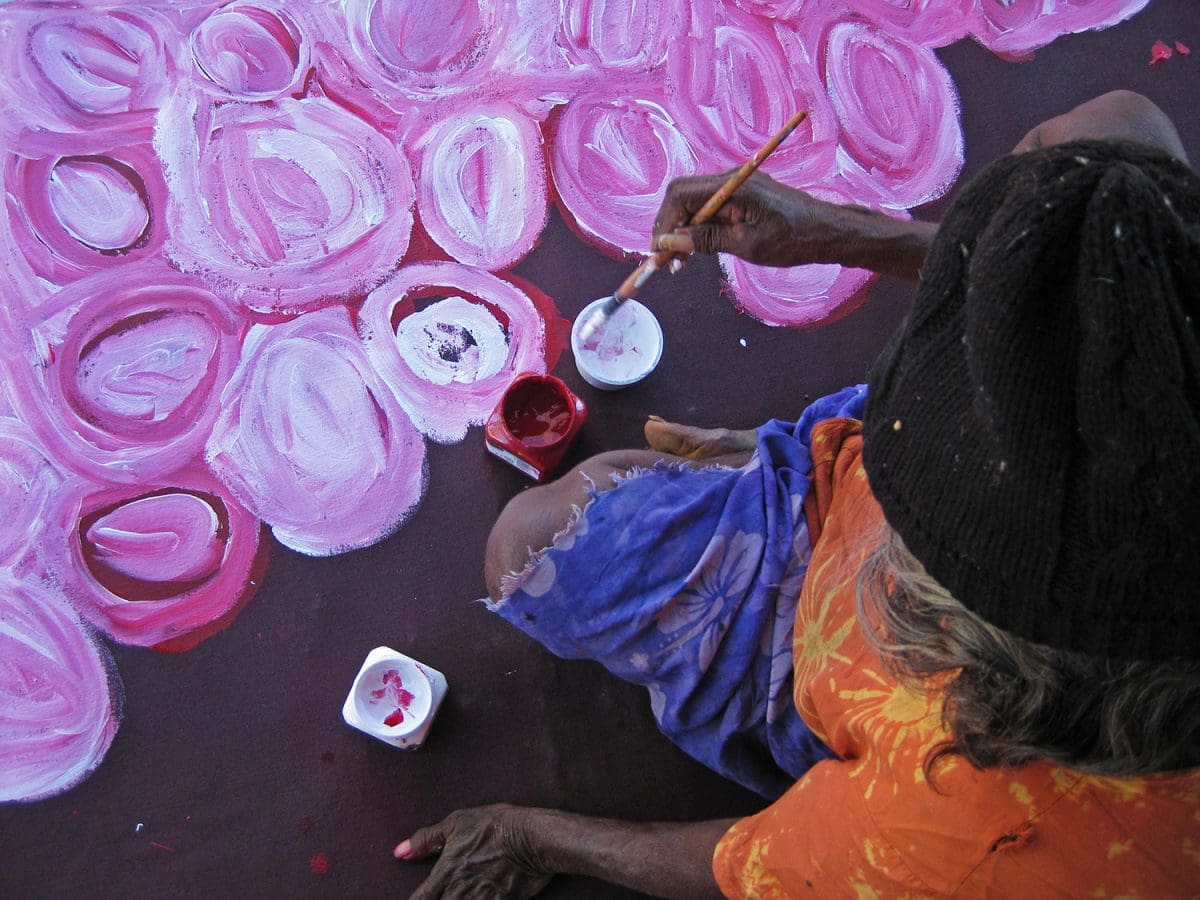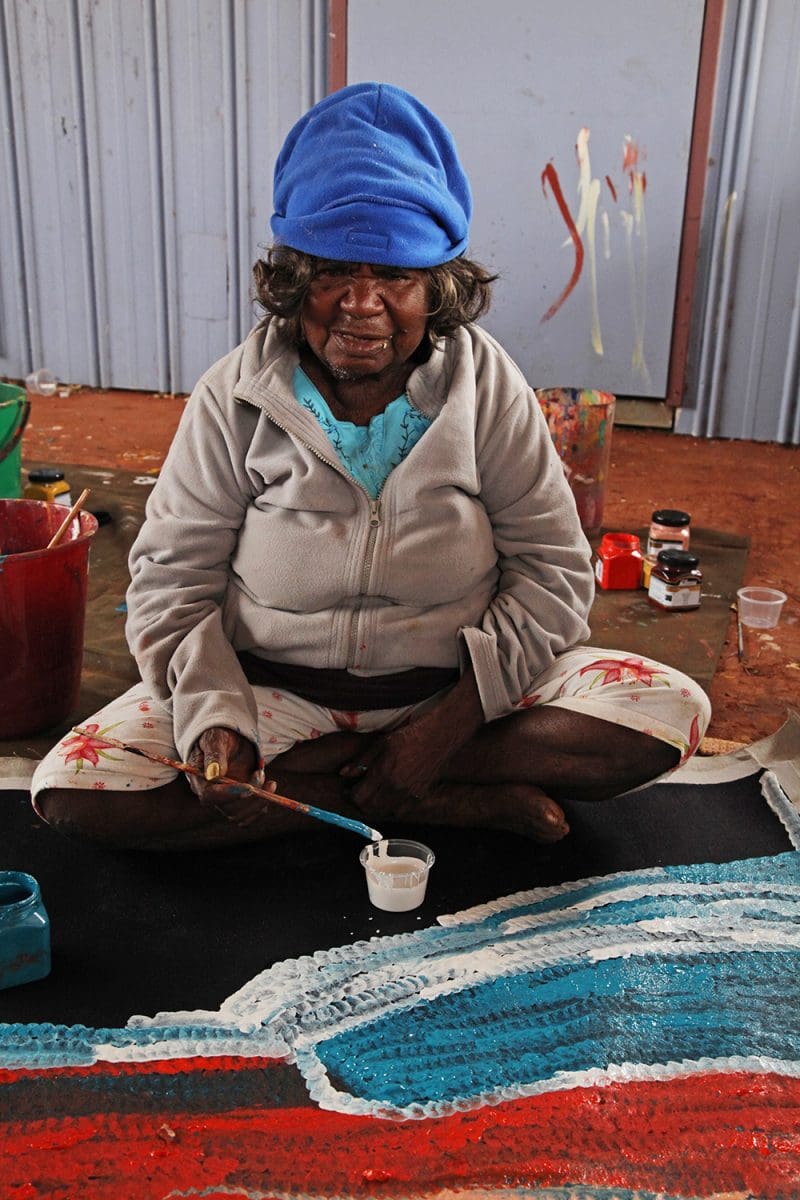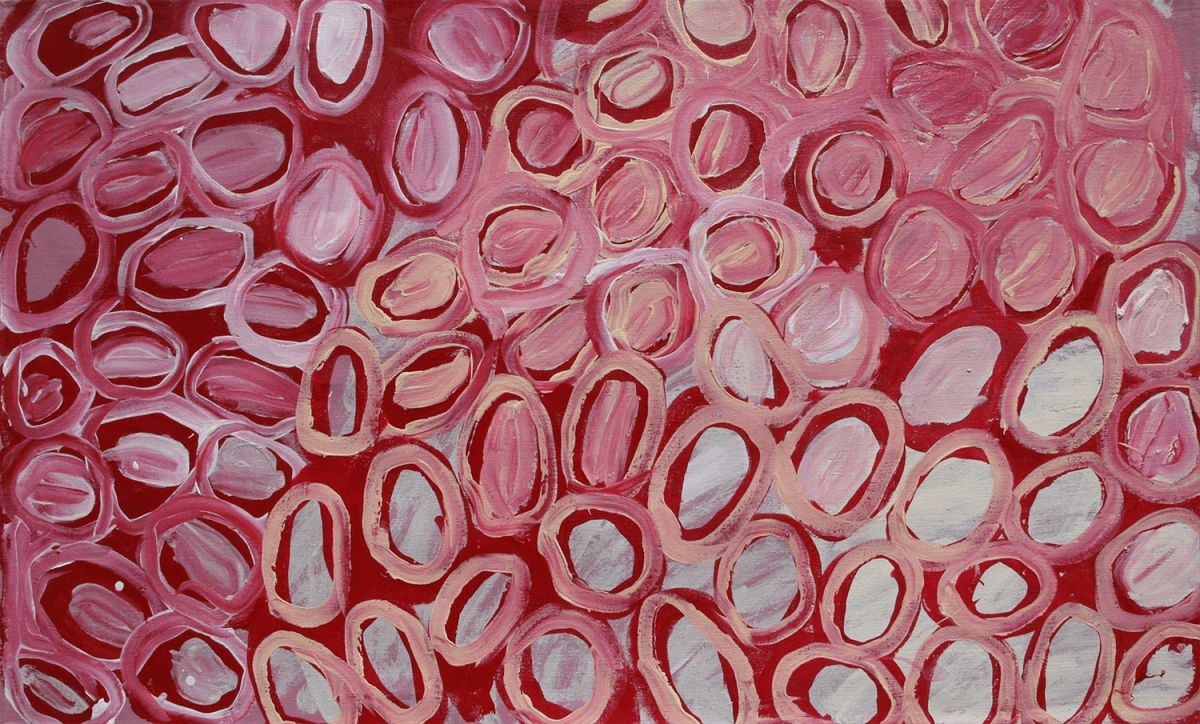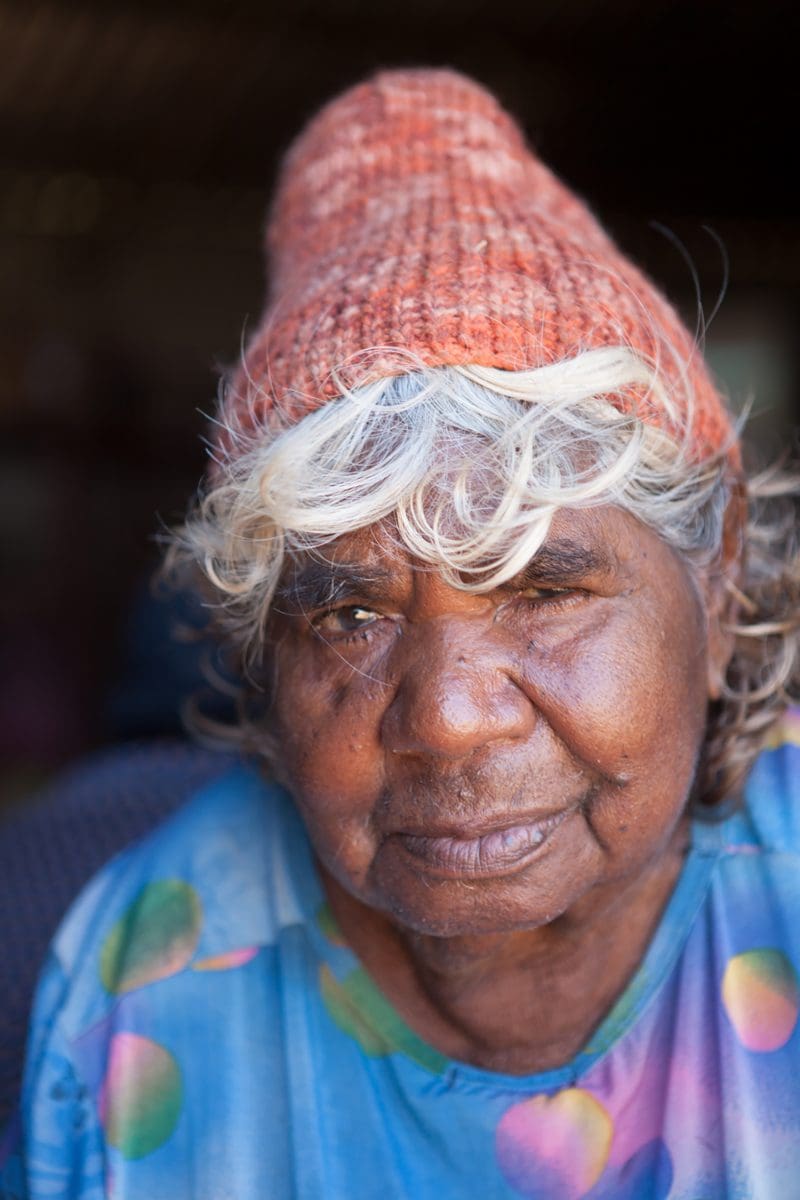
Poetics of Relation
Tender Comrade, currently on show at Sydney’s White Rabbit Gallery, creates a new vocabulary of queer kinship by reimagining the relationship between artworks, bodies and space.









Although Bugai Whyoulter’s paintings are well known and in the collections of major institutions in Australia, not much is known about the artist herself. Bugai is a bit of an enigma to many, says Andrew Nicholls, curator at FORM (a not-for-profit cultural organisation in Western Australia), who worked on Bugai’s solo show. The exhibition was initiated by Martumili Artists, with whom Bugai has been associated with since 2007.
Nicholls says the goal of the exhibition – the artist’s first solo show since 2011 – is to introduce Bugai to a wider audience, and also to help convey a sense of who she is. As a long-time fan of the artist, Nicholls says these recent works speak for themselves. “It’s work that people gravitate towards.”
Bugai’s painting career is relatively young. She only picked it up 12 years ago, under the encouragement and mentorship of members of her extended family and late renowned artists such as Nora Nungabar and Nora Wompi. The three artists once lived in a house together, and Bugai, initially a weaver, would weave baskets while watching the two Noras paint. It was here that her interest in the medium bloomed, says Nicholls.
She is also unafraid to play around with scale and colour, comfortably oscillating between soft pastel hues and vibrant, louder tones. Those familiar with the work of her mentors might be able to see traces of their influence in these paintings, but on the whole, Bugai’s style is her own.
Bugai is of the pujiman (bush or desert-born) generation and grew up moving from place to place along the Canning Stock Route. Her recollection of Country is incredibly strong, and it’s this memory and her “assertive knowledge of Country,” as Nicholls puts it, that informs her work.
The exhibition is structured around the many places Bugai has lived, including Parnngurr, an Aboriginal community at the southern end of the Karlamilyi desert in the Pilbara; Wangkakarlu, a special meeting place southeast of Parnngurr; and Wantili, which is close to Bugai’s birthplace, and is also where a teenaged Bugai first encountered whitefellas, among other places of significance.
Bugai currently lives in Kunawarritji, Western Australia, which is a place described as “a site of return, a place where people came back to continue their life in the desert with the formation of Kunawarritji community in the early 1980s” in the exhibition catalogue.
Kunwarritji is also the title of one of the largest recent paintings in the exhibition, the last to be completed, in fact. Bugai’s paintings are named after places, and as a result there are many paintings in her oeuvre called Kunwarritji, but this particular one is the largest to date, measuring three metres wide.
She has continued to weave over the years, although less prolifically since focusing on her painting practice. The exhibition includes 22 baskets, all completed within the last five years.
Nicholls says one of the most special things about collaborating with Bugai and Martumili on this exhibition was the opportunity to observe Bugai at work, see the exhibition come together as each new work was completed, and also learn more about the celebrated, and significant, Martu artist.
Bugai
Bugai Whyoulter
The Goods Shed at FORM
4 July – 15 September